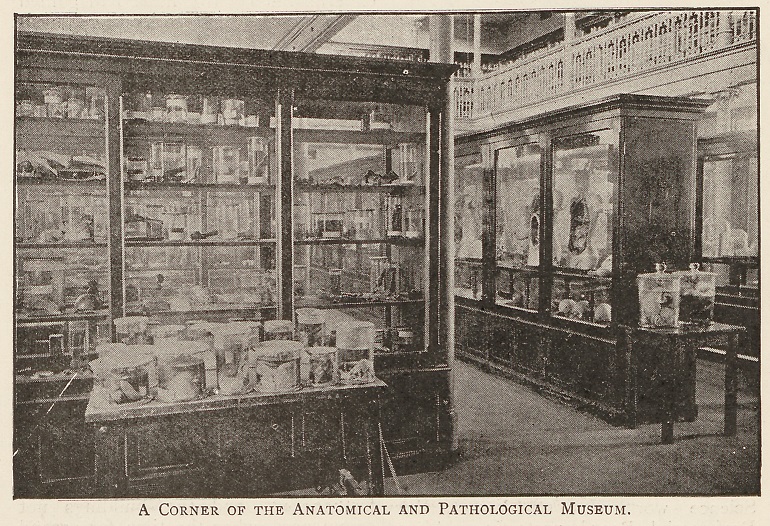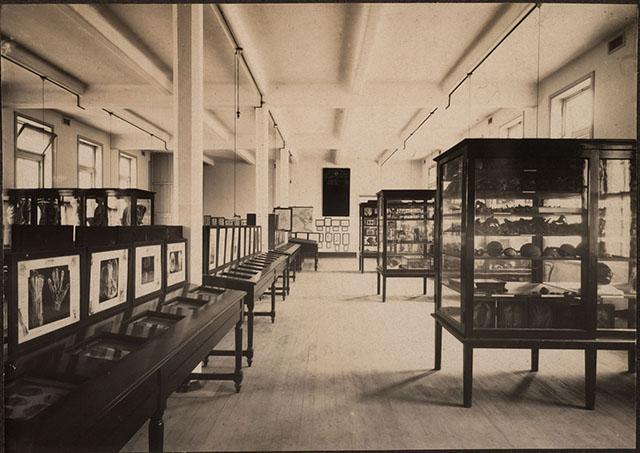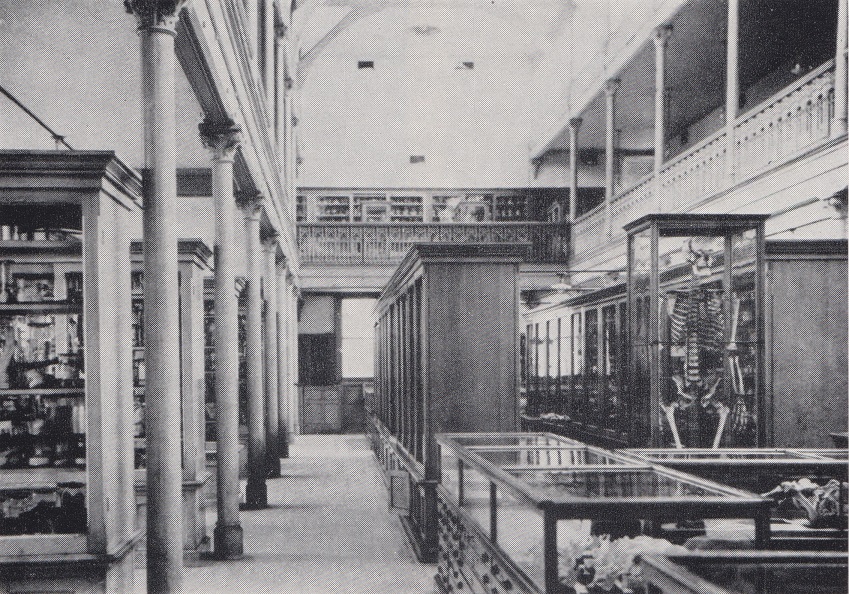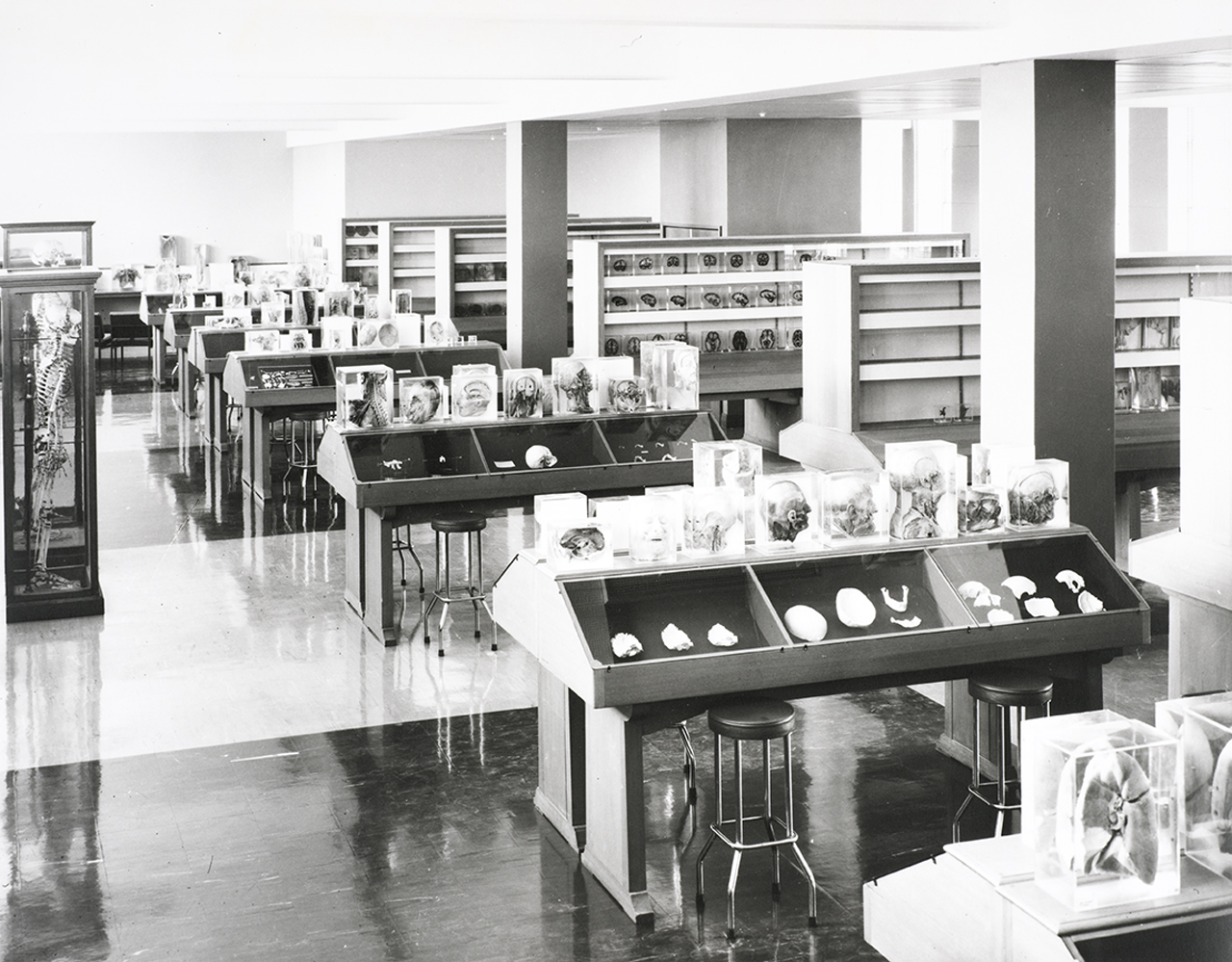The foundation of the anatomy and pathology collections dates to 1859, when the University Council proposed the establishment of a museum of ‘anatomical, pathological, physiological and botanical’ specimens. Specimens were collected, mounted and maintained by Thomas Shearman Ralph (1813-1892) and were situated in a shed on the grounds of Melbourne Hospital – as the museum predated the establishment of the University’s Medical School. In 1861, Ralph's run as curator ended, and management of the collection was assumed by the university.
Eight years later Professor George Halford (1824-1910), foundational professor of anatomy, physiology and pathology, requested the appointment of a demonstrator. The job went to William John Smith (1846-1929) and soon after this appointment he was also given responsibility as curator of the pathology museum at the hospital. This was short lived, and Smith resigned after a year as curator.
In December 1876, pathologist Harry Brookes Allen (1854-1926) was appointed Lecturer in Descriptive and Surgical Anatomy and Pathology, and Sub-conservator of the Museum. By 1883, the museum had outgrown its small space in the hospital, and Allen proposed that it be relocated to the university and expanded under his supervision. In a letter to the Vice-Chancellor and Members of the University Council, Allen wrote:
One of the final objects which I set before myself is the creation of a large and efficient Museum of Anatomy and Pathology in the Medical School, a small but valuable nucleus being already in place.In November 1883, the collection of specimens formed at the Melbourne Hospital was transferred by Deed of Gift to the University. Two years later the new Medical School building was completed, with almost the entire southern wing allocated to the museum.

In 1906, Anatomy and Pathology were split into separate departments, and a dedicated Professor of Anatomy was sought. Professor Richard Berry (1867-1962) arrived in Melbourne the following summer. Appalled by the neglected state of the Anatomy Department, Berry expended a huge amount of energy in building it up to his idea of a proper school of anatomy. After the departmental split, the anatomical specimens and models from Allen’s museum were transferred to the new Anatomy Museum. From the time of the split until the building of the new Anatomy Building in 1923, the two museums cohabited in what became known as the Old Pathology Building (and is now named the Elisabeth Murdoch Building); the Anatomy Museum in the north wing and the Pathological Museum in the south wing.

From the late 20th century onward the Anatomy Museum’s displays have focused on clinical anatomy specimens but in its early days the anthropological collections were considered equally important, being described as a ‘museum of anatomy, anthropology, and neurology ’. In 1914, on the jubilee of the Medical School, Allen wrote:
The great feature of the new [Anatomy] Museum was the series of frozen sections and of permanent dissections prepared by Professor Berry, and a complete department of anthropology was speedily organised and enriched with great numbers of specimens and casts.Due to Allen's lifelong dedication to expanding and organising the pathology collections, the Pathology Museum was named in his honour after his death in 1926.

In 2004, the two collections were reunited and named The Harry Brookes Allen Museum of Anatomy and Pathology, to serve as a joint facility of the Anatomy & Neuroscience and Pathology Departments of the Faculty of Medicine, Dentistry and Health Sciences of the University of Melbourne. The combined collections comprise over 11,000 specimens.


